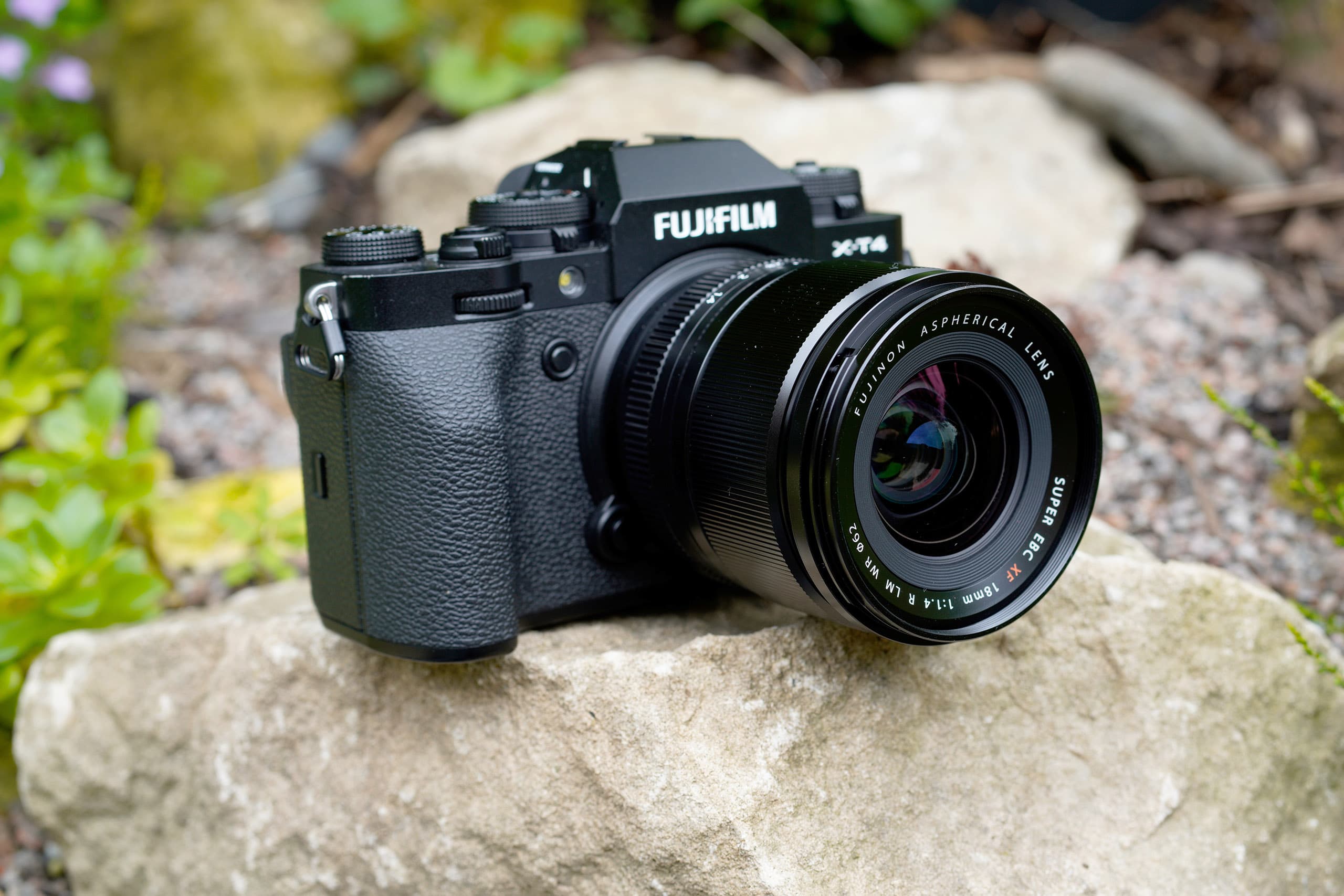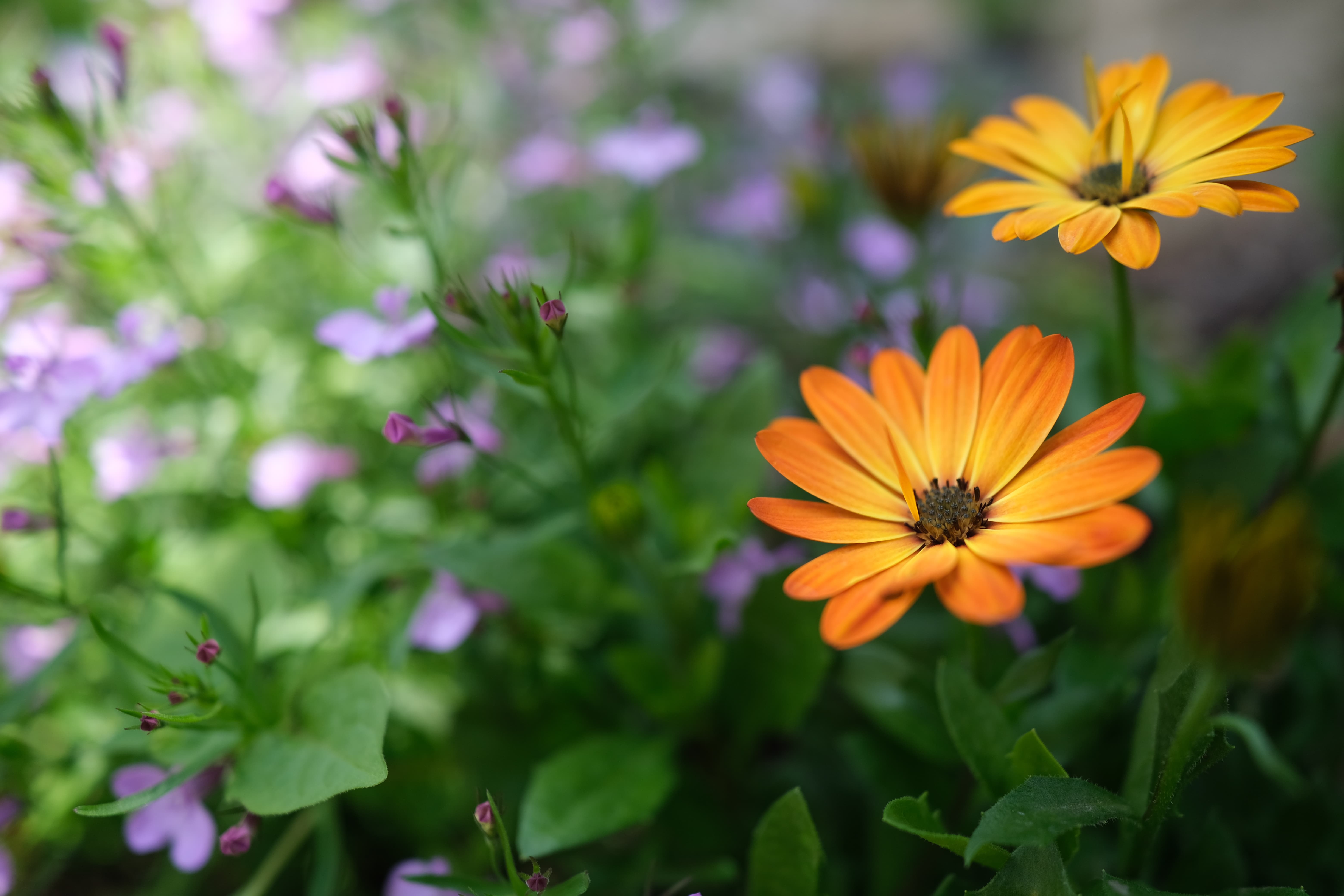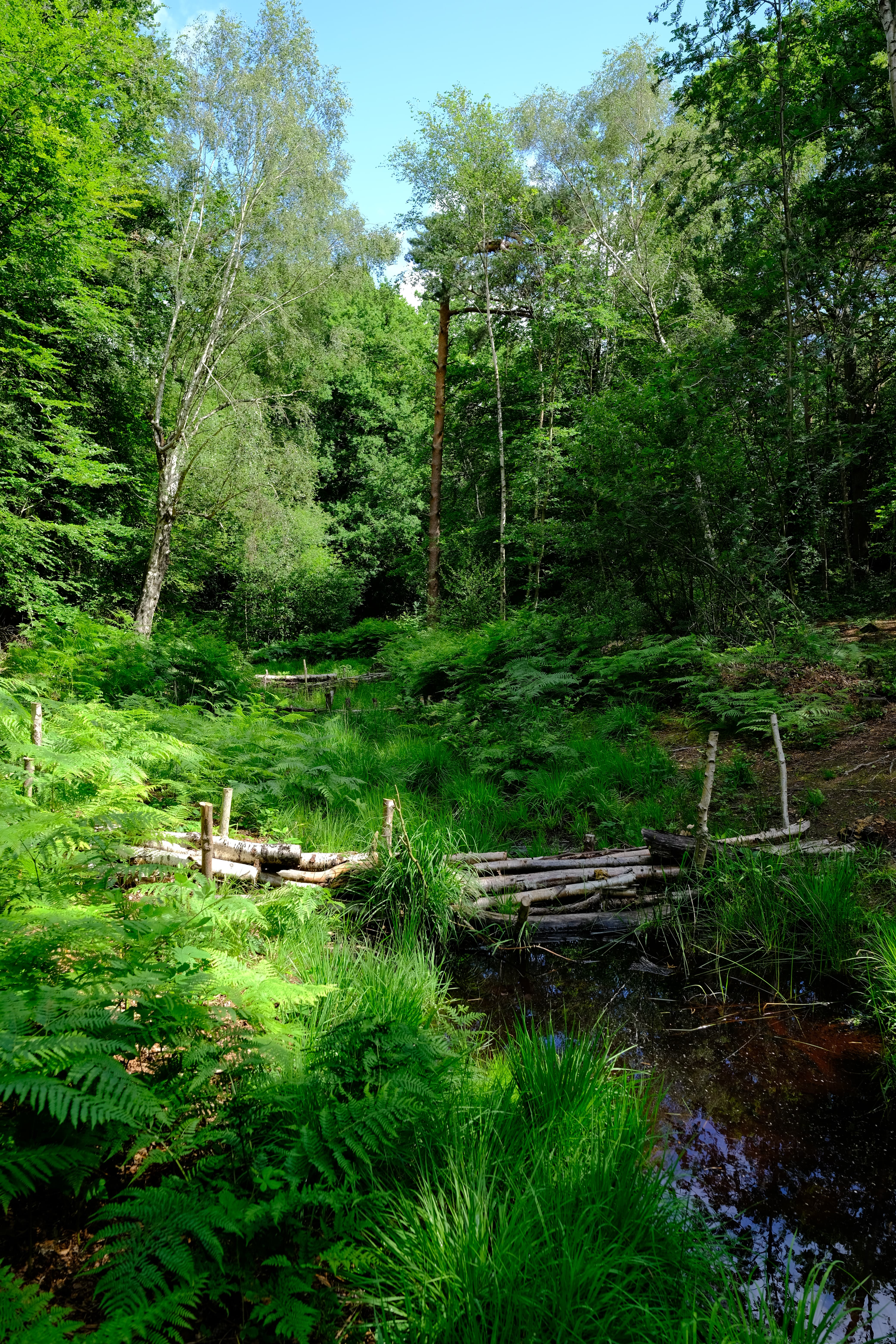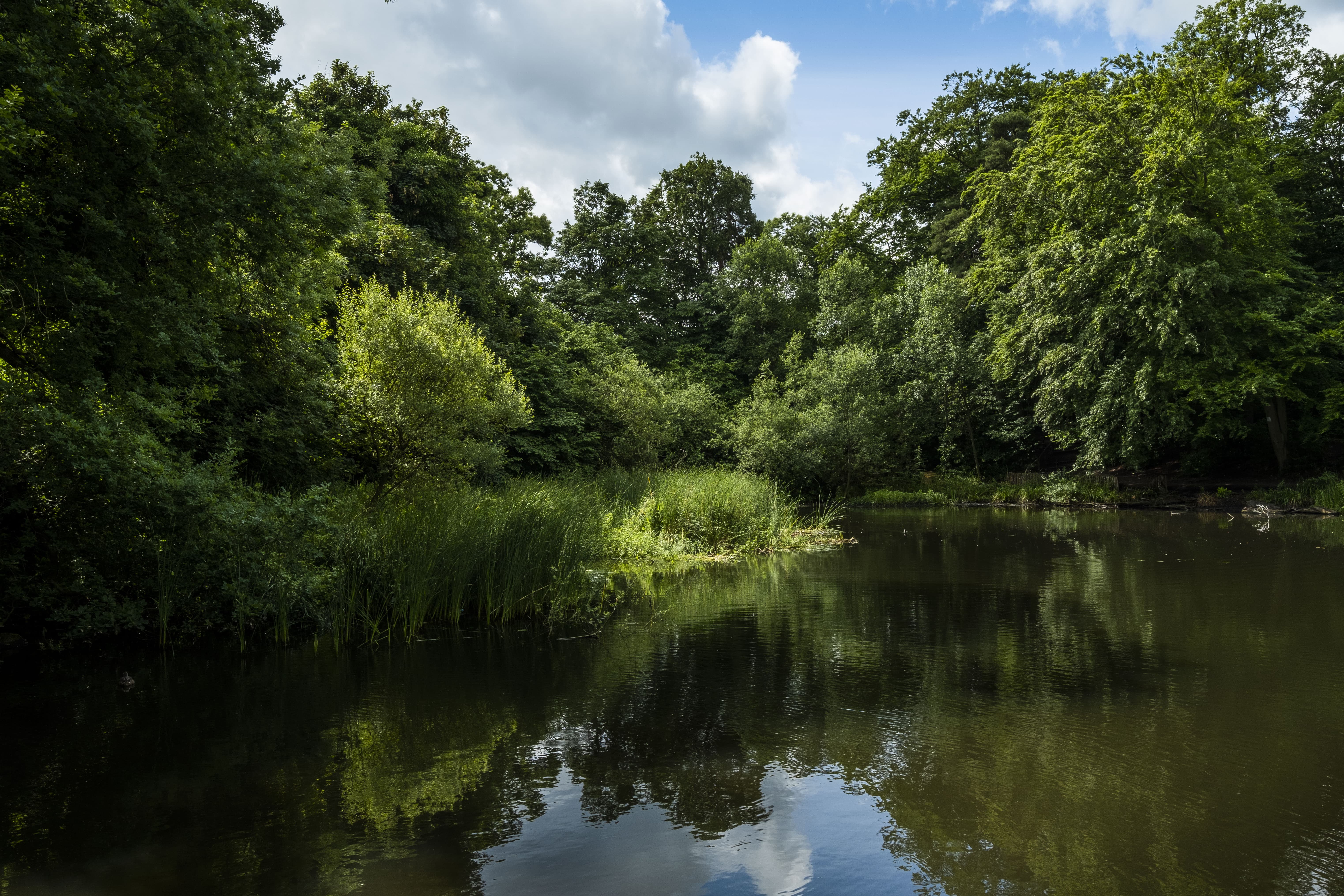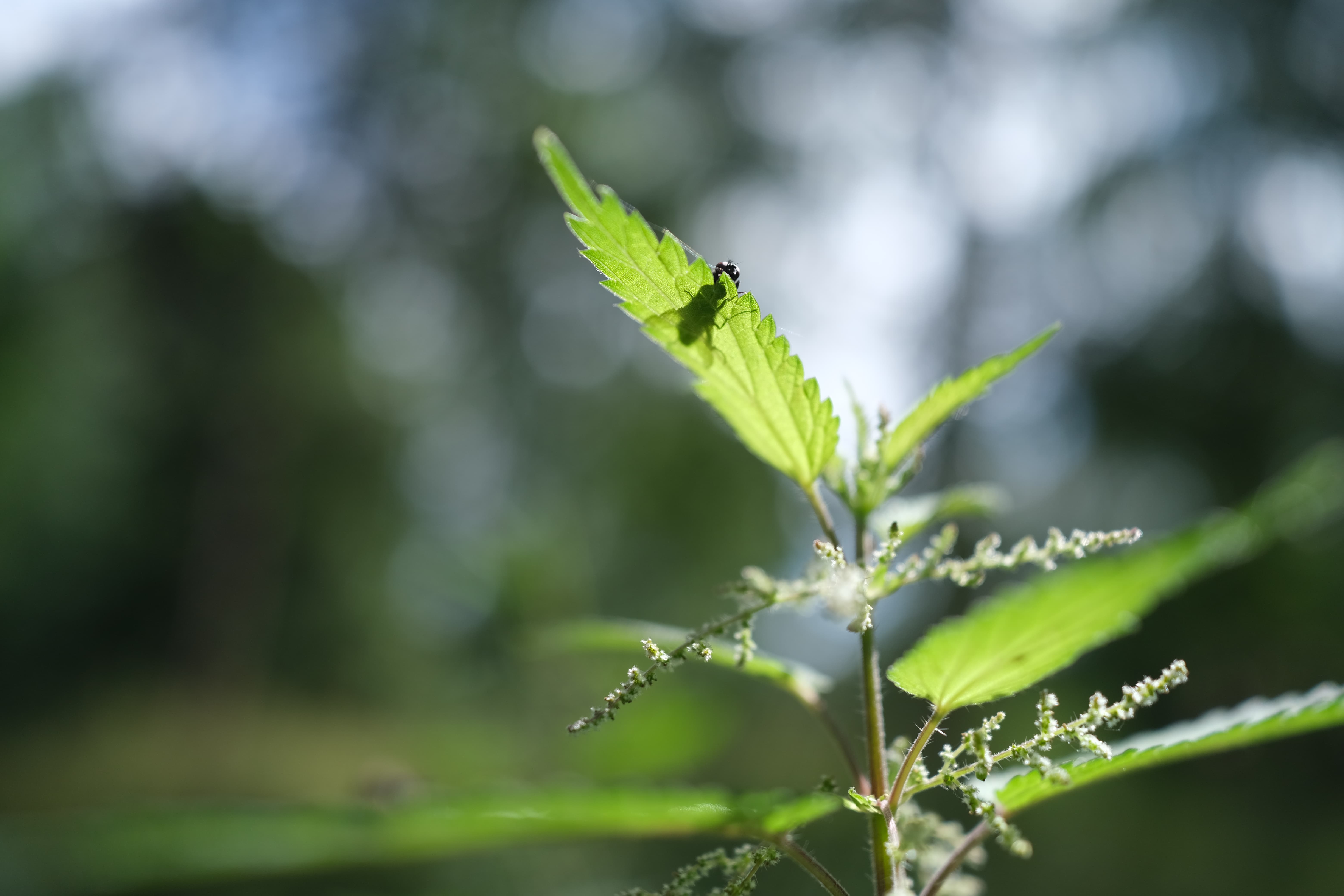It was nine years ago, back in 2012 when Fujifilm announced the X-Pro1 camera. This was the first of a new line of mirrorless X-system models, and along with it came a new range of Fujinon lenses, including the XF 18mm F/2 R. This compact and lightweight wideangle prime was a great match for the equally agile X-Pro1.

Fujifilm XF 18mm f/1.4 R LM WR Lens
Like some other manufacturers, Fujifilm is now at a stage where it is updating some of those original focal lengths to create faster lenses, as the technology and the demand has increased. It is also a sign of the times that mirrorless systems no longer stand for simply being ‘smaller and lighter’ than their DSLR counterparts; instead they’ve evolved to be judged on their own merit. With that in mind, Fujifilm has introduced the new Fujifilm Fujinon XF 18mm f/1.4 R LM WR – a lens that is brighter, but also significantly larger than the original 18mm f/2.
Fujinon XF 18mm f/1.4 R LM WR Features
As a 18mm lens on the APS-C format Fujifilm X-Series, this provides the equivalent field of view to a 27mm lens on a full frame camera. A quick look at its designations reveals a few more details. Firstly, it is an R series lens, which means that it has a built-in aperture ring, while the WR designation indicates that it boasts weather resistant construction. The Super EBC designation tells us that it exploits Fujifilm’s Electron Beam Coating to reduce ghosting and flare. Finally, the LM designation indicates that this lens employs a linear motor for focusing. Such designs can push lens elements back and forth very quickly, rather than relying on a ring type motor where the lenses are moved by turning them on a helicoid. The result is the 18mm f/1.4 lens should focus extremely quickly, accurately, smoothly, and, for those interested in shooting video, quietly.
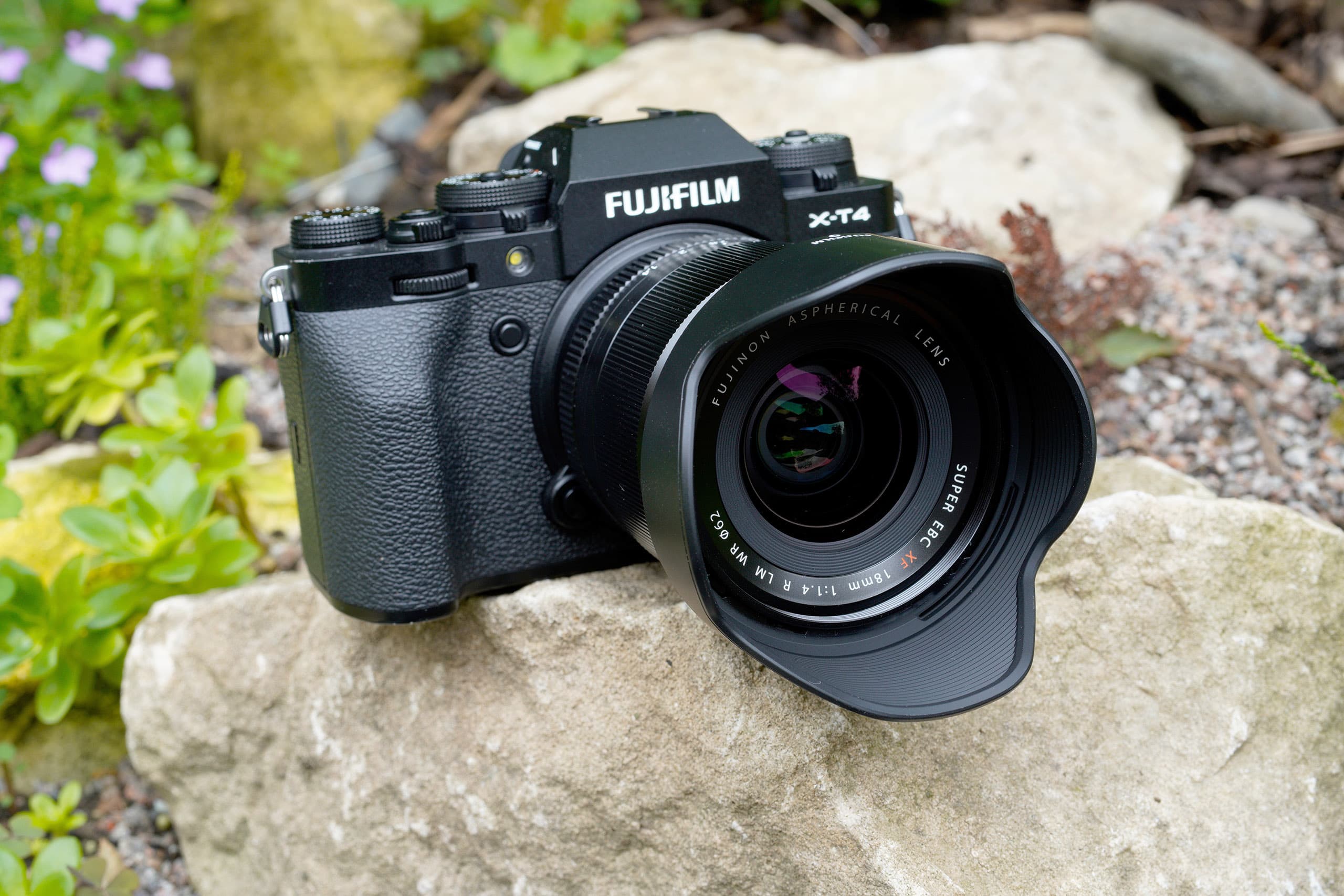
Fujifilm XF 18mm f/1.4 R LM WR Lens with hood
One thing that you will see missing from the lens designation is OIS, for Optical Image Stabilisation. Instead, photographers and videographers will have to rely on in-body image stabilisation which is only provided by a few Fujifilm cameras, including the X-H1, X-S10 and X-T4. That said, this is a fairly wide-angle lens with a large aperture, so there shouldn’t be too many issues shooting handheld with no stabilisation.
In terms of optical design, the lens is composed of 15 elements in 9 groups, including three aspherical elements and one extra low dispersion element. There are nine rounded aperture blades, which should produce nice smooth round bokeh, and the aperture ring itself is clickable in one-third stop increments, not just full stops.

Fujifilm XF 18mm f/1.4 R LM WR Lens Top
The lens has a 62mm filter thread, which is the same as a few of Fujifilm’s other popular prime lenses, such as the 56mm f/1.2 and the 23mm f/1.4. Finally those wanting to take close-up shots should be pleased with the 20cm minimum focus distance, which when the lens and sensor position is taken in to consideration, means that you can get the front element around 11cm from the subject. Don’t expect macro performance, but for some shots of flowers in situ, it’s a nice lens.
Fujinon XF 18mm f/1.4 R LM WR Build and Handling
Handling-wise the lens feels very much like the Fujifilm lenses that we have come to love over the past decade. The barrel is solid metal with plastic aperture and focusing rings. The aperture settings are clearly marked in a style that is reminiscent of the Zeiss DIN lettering, which helps give Fujifilm lenses that classic camera feel. A small button the locks the aperture ring in the ‘A’ position for when you want the camera to automatically change the aperture in Program or Shutter Priority mode.
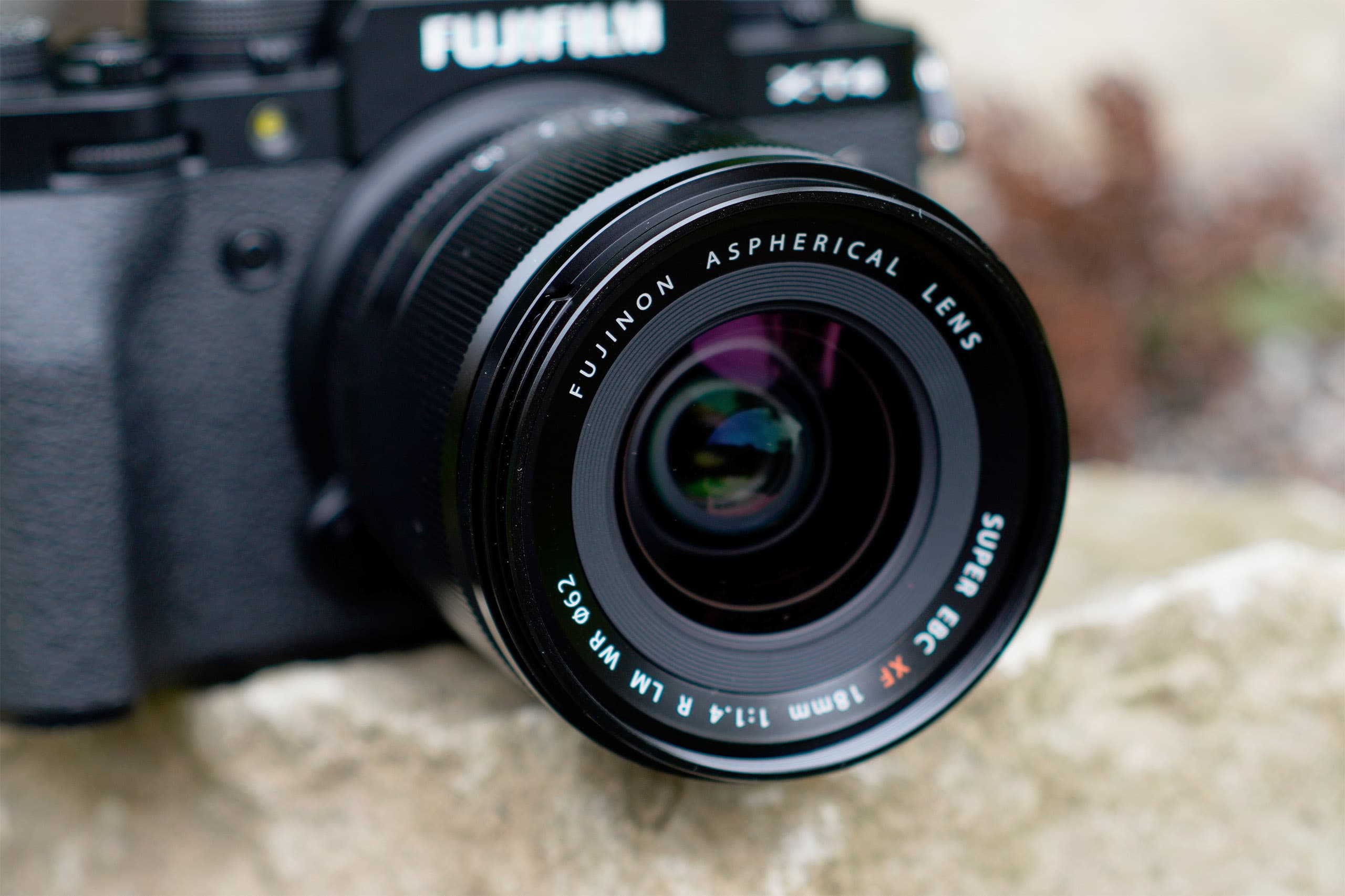
Fujifilm XF 18mm f/1.4 R LM WR Lens
At the rear of the lens is a very thin rubber O ring seal that should help prevent dust and moisture getting between the lens and the camera mount itself. And whilst we obviously can’t see inside the lens, Fujifilm has said that there are eight points of weather sealing around the barrel to prevent dust and moisture ingress, so it should cope in all but the very harshest conditions.
In terms of its size, the 18mm lens is obviously a lot bigger than the original 18mm f/2 lens because of its larger f/1.4 maximum aperture. It weighs 370 grams, as opposed to just 116g for the f/2 optic, and is also nearly twice as long, at 75.6mm as opposed to 40.6mm. As a result, the 18mm f/1.4 is probably better paired, in terms of balance, with the SLR-style bodies in Fujifilm’s X range. Not that it would be bulky or cumbersome with an X-Pro camera, but street photographers, for example, tend to favour reduced size and weight for discretion.
Fujinon XF 18mm f/1.4 R LM WR Autofocus
When it comes to autofocus, the Fujifilm 18mm f/1.4 works exactly as you would expect it to. It’s fast and very snappy in single AF mode and when switched to continuous it does a great job of tracking the subject the camera is following, especially when it is using Eye AF.
The linear motors are very fast and also very quiet, which is great when you are shooting video. When in the video mode the focusing slows down slightly, it isn’t as snappy, but instead it is very smooth as you switch focus from one subject to another. Again, Eye and Face AF work well when shooting video.
Fujinon XF 18mm f/1.4 R LM WR Image Quality
Having an f/1.4 aperture on a lens that is a 27mm equivalent is fantastic for getting a shallow depth of field on subjects like flowers, especially as you can get in very close. Details in the centre of the frame are incredibly sharp even with the aperture wide open. Out-of-focus areas look smoothly blurred at f/1.4, making this a lovely lens to use wide open. When stopped down to f/2.8 the nine aperture blades do their job, creating nice circular bokeh with smooth out-of-focus transitions.
It will come as no surprise that the lens performs best at around f/5.6 to f/8, and again, the details in the centre of the image at f/8 are impressively sharp. Towards the extreme corners there is some drop off in the sharpness, but there is still more than enough detail here for landscapes, particularly if you are clever with hyperfocal focusing to make sure that the foreground is in focus.
By the time you reach the smallest aperture of f/16, there is, obviously a loss of the very finest detail due to diffraction. However as the lens comes from such a good place regarding sharpness in the first place, I would be perfectly happy to shoot at this aperture if I really needed to maximise the depth-of-field. That said stick with f/11 if you can for sharper results.
The smaller apertures also produce great looking sun stars for those who like shooting directly into the light. There weren’t any really noticeable flares and the lens does come with a hood so light from acute angles should be shaded anyway. I shot quite a lot in bright midday sunlight and when looking at my shots taken either wide open or a stop or two down, I have struggled to see any chromatic aberration in either JPEG or raw files opened in Adobe Lightroom. Whether this is the result of the coatings on the lens, or some processing to both the JPEGs and the raw files, or indeed a bit of both, I’m not too sure. But either way, chromatic aberration shouldn’t be an issue with this lens.
Similarly, vignetting isn’t really an issue. It’s clearly visible at f/1.4 but is very smooth in gradation. By the time you’ve closed the aperture down one or two stops, it has largely gone and probably won’t be noticeable unless you happen to be photographing evenly-lit white walls.
It’s a similar story with distortion. Using the standard photographer’s test of photographing a brick wall, I couldn’t see any barrel distortion in either the JPEG or raw images. Overall it seems to be optically crafted extremely well, maximising image quality whilst at the same time keeping lens distortions to an absolute minimum.
Fujinon XF 18mm f/1.4 R LM WR Verdict
The Fujifilm XF 18mm F1.4 R LM WR is a great option for landscape and street photographers and also for videographers. With many smartphone manufacturers opting to use a 27mm focal length for their main cameras, it is become a more popular focal length over the last few years for all different styles and subjects.
However, at £879 it is a serious chunk of money for what is a seriously good lens. The older 18mm f/2 lens can be found for around £500 new or just £250 used, and it is obviously smaller and lighter. This makes it a compelling alternative for street photography.
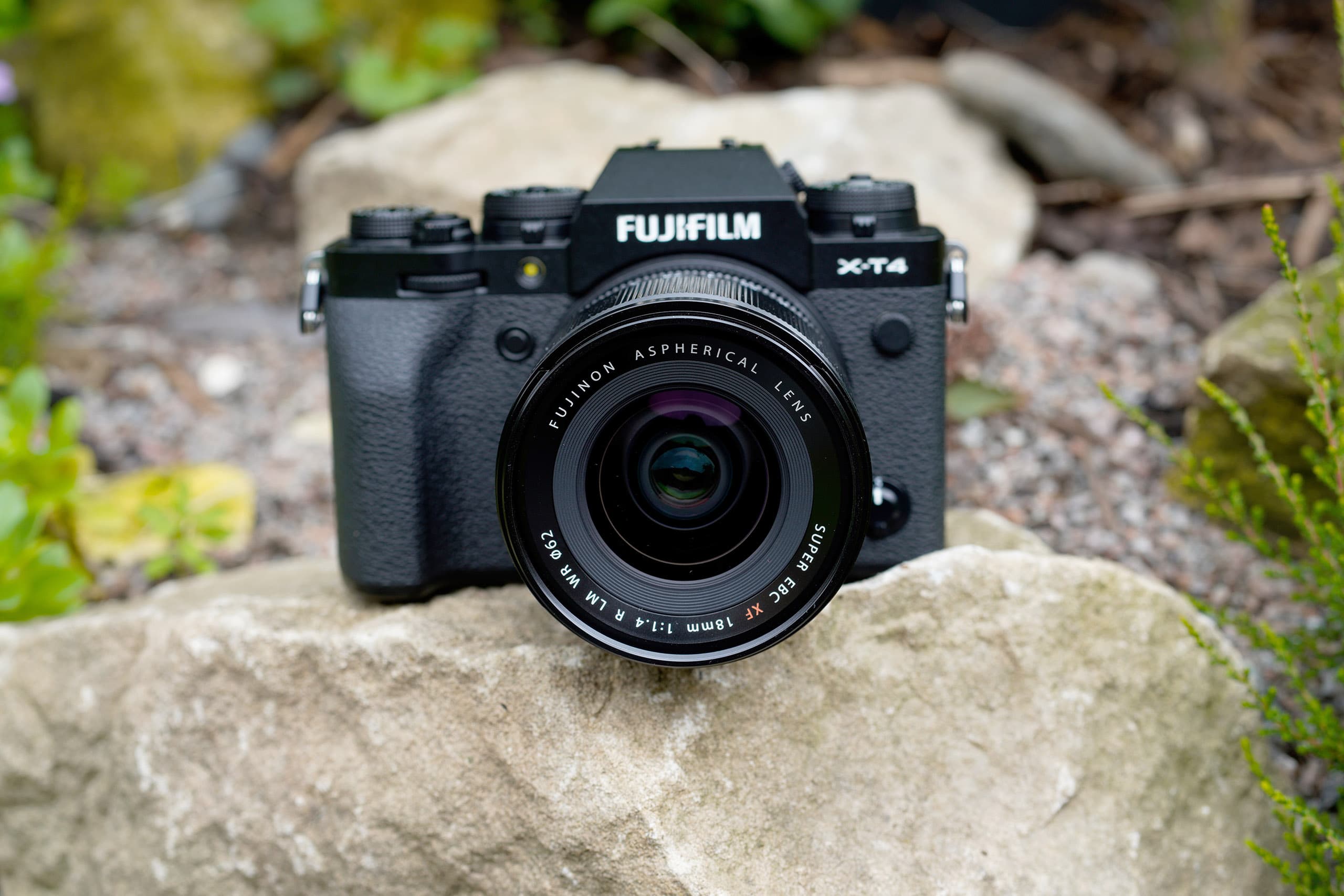
Fujifilm XF 18mm f/1.4 R LM WR Lens
In terms of the optics and autofocus, though, there is absolutely nothing to complain about with the 18mm f/1.4. It is sharp throughout the range, showing just a touch of softness at the very edges. And all the aberrations that we might expect to see from a lens of this type aren’t noticeable at all.
Overall, it’s hard to find fault with the lens whatsoever, with everything from the build quality and image quality being of a very high standard. I would wholeheartedly recommend this lens to photographers and videographers who are in demand of a 27mm equivalent focal length.

Fujinon XF 18mm f/1.4 R LM WR Specifications
